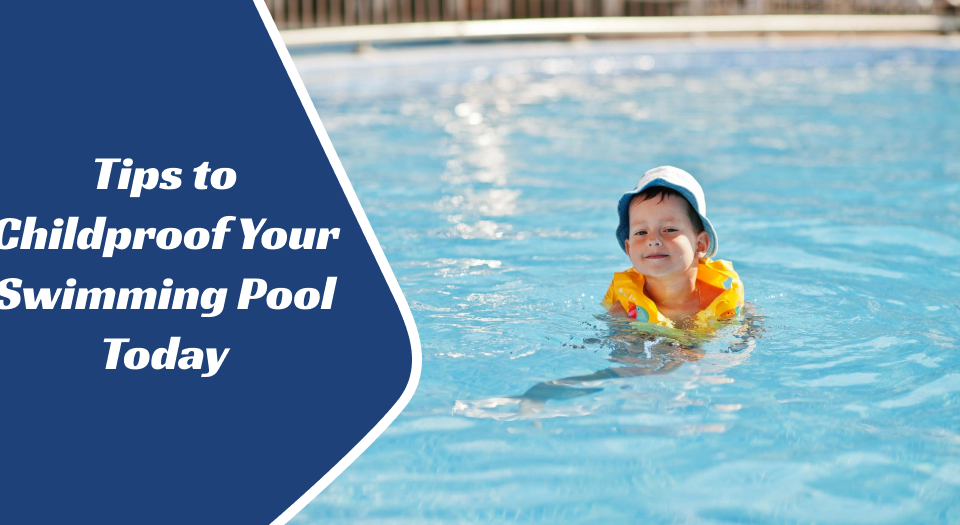
Tips to Childproof Your Swimming Pool Today
April 15, 2025If you’ve ever stood by your backyard window, coffee in hand, looking out at your covered pool and wondering, “Is it time yet?”—you’re not alone. For pool owners, the seasonal shift from cold to warm brings anticipation, excitement, and a checklist of things to do. Opening your pool isn’t just about uncovering it and jumping in; it’s about timing it right and doing it smart.
At Life Saver Pool Fence, we believe in more than just safety—we believe in helping families make the most of their backyard oasis. So whether you’re a new pool owner or a seasoned one, this guide will help you understand the best time to open your pool and what you need to consider before diving in.
Why Timing Matters When Opening Your Pool
Opening your pool at the wrong time can cause more trouble than you might expect. Do it too early, and you might find yourself battling fluctuating temperatures, algae blooms, and extra maintenance. Wait too long, and you may face a murky, green mess that’s harder (and more expensive) to clean up.
Timing your pool opening is about striking a balance between weather conditions, water chemistry, and your household’s readiness to use the pool. The perfect time varies depending on your location, but a general rule of thumb is: when daytime temperatures consistently hit 70°F (21°C) or higher, it’s time to start preparing.
Spring is Prime Pool-Opening Season
For most pool owners in the U.S., spring is the sweet spot. But even within spring, there are nuances:
Early Spring (Late March to Mid-April)
Pros:
- You get a jumpstart on cleaning and prepping.
- Less chance of algae growth since water temps are still low.
- Easier chemical balancing.
Cons:
- Weather is still unpredictable in some regions.
- It may require heating if you plan to swim early.
Mid to Late Spring (Late April to May)
Pros:
- More stable temperatures.
- Ideal for setting up before summer.
- Swim season starts sooner for the family.
Cons:
- Algae might have started to bloom if you waited too long.
- Busier pool service schedules—book early if you need help!
If you live in southern states like Florida, Texas, or Arizona, you can open your pool year-round or in early spring. For northern areas, waiting until late April or May is often safer.
Key Signs It’s Time to Open Your Pool
Even if you’re still unsure, here are a few unmistakable signs it’s time to pull the cover off:
- Consistent Temperatures Above 70°F
- Algae begin to thrive once water temperatures rise. Getting your pool up and running before this growth accelerates makes managing it much easier.
- Pollen Season Has Begun
- If you notice yellow film or pollen on your pool cover, it’s a good indication spring is here. Waiting too long can lead to pollen mixing into your pool water, requiring more filtration and cleaning.
- You Have Time to Maintain It
- Opening the pool is just the beginning. If your schedule allows you to perform regular upkeep—or you have a reliable service—it’s a good time to start.
- Family’s Getting Antsy
- If your kids (or you) are already asking when they can go swimming, that’s your cue.
Pre-Opening Checklist: What You’ll Need
Before you peel off the cover and start filling up pool floats, make sure you have the essentials ready:
- Pool cover pump (to remove standing water)
- Skimmer net and brushes
- Test strips or a pool testing kit
- Start-up chemicals (chlorine, algaecide, stabilizer, etc.)
- Pool vacuum or automatic cleaner
- Replacement filters or cartridges (if needed)
Being prepared can save you hours of frustration. Many pool stores offer opening kits—these can be convenient, especially if you’re short on time or unsure what to buy.
Steps to Open Your Pool Properly
Let’s break down the process into manageable steps. Don’t rush through them—taking your time ensures a cleaner, safer, and more enjoyable pool season.
1. Remove and Clean the Cover
- Use a cover pump to remove standing water.
- Sweep off debris before folding the cover.
- Clean and dry the cover before storing it to prevent mildew.
2. Inspect Your Pool and Equipment
- Check for visible damage to the pool liner or tiles.
- Inspect your pump, filter, heater, and any piping for cracks or leaks.
- Reconnect and secure any disconnected equipment.
3. Fill the Pool to the Right Level
- Top off the water so it’s halfway up the skimmer opening.
- This ensures your pump has enough water to circulate properly.
4. Power Up and Test Equipment
- Turn on the pump and filtration system.
- Look for leaks or strange noises.
- Run the system for several hours to circulate the water.
5. Test and Balance Water Chemistry
- Test for pH, chlorine, alkalinity, stabilizer, and calcium hardness.
- Adjust chemicals slowly and in the proper order.
- Consider shocking the pool to eliminate any residual bacteria or algae.
6. Clean Thoroughly
- Skim, brush, and vacuum the pool.
- Let your filter run continuously for 24–48 hours after opening.
Safety First: Don’t Forget the Pool Fence
As exciting as opening your pool can be, don’t forget about pool safety—especially if you have children or pets.
This is where Life Saver Pool Fence comes in. A sturdy, professionally installed mesh fence is a smart, proactive step toward ensuring your pool area remains a safe space for your family. Here’s why it matters:
- Drowning is a leading cause of accidental death in children under 5.
- A pool fence acts as a physical barrier, giving parents peace of mind.
- Life Saver fences are climb-resistant, easy to remove when not needed, and aesthetically pleasing.
Opening your pool should always go hand-in-hand with reviewing your safety setup. Make sure your gate latches properly, and inspect your fence for wear and tear. If you’ve moved into a new home or just added a pool, now’s the perfect time to schedule a fence consultation.
What If You Wait Too Long?
Let’s say life gets in the way (it happens), and you don’t open your pool until late May or even June. What should you expect?
- More algae and debris: Warm water and stagnant conditions are a breeding ground for green water.
- More chemical treatment required: Balancing the water may require extra effort.
- Equipment strain: Running the pump for extended periods to clean up may stress your system.
While it’s never too late to open your pool, it’s certainly easier—and cheaper—to do it sooner rather than later.
Final Thoughts: Make It a Ritual, Not a Chore
Opening your pool marks the unofficial start of spring or summer. It’s a moment to look forward to, not dread. You can make the transition from winter to swim season seamless by timing it right and following a thoughtful process.
And remember: safety is part of the joy. If you haven’t already installed a Life Saver Pool Fence, consider making this the year you do. You’ll enjoy peace of mind alongside the sunshine.
So, is it the perfect time to open your pool? Check the temperature, grab your test kit, and let the poolside memories begin.
Would you like me to format this into a downloadable blog post or add visuals to enhance readability?




